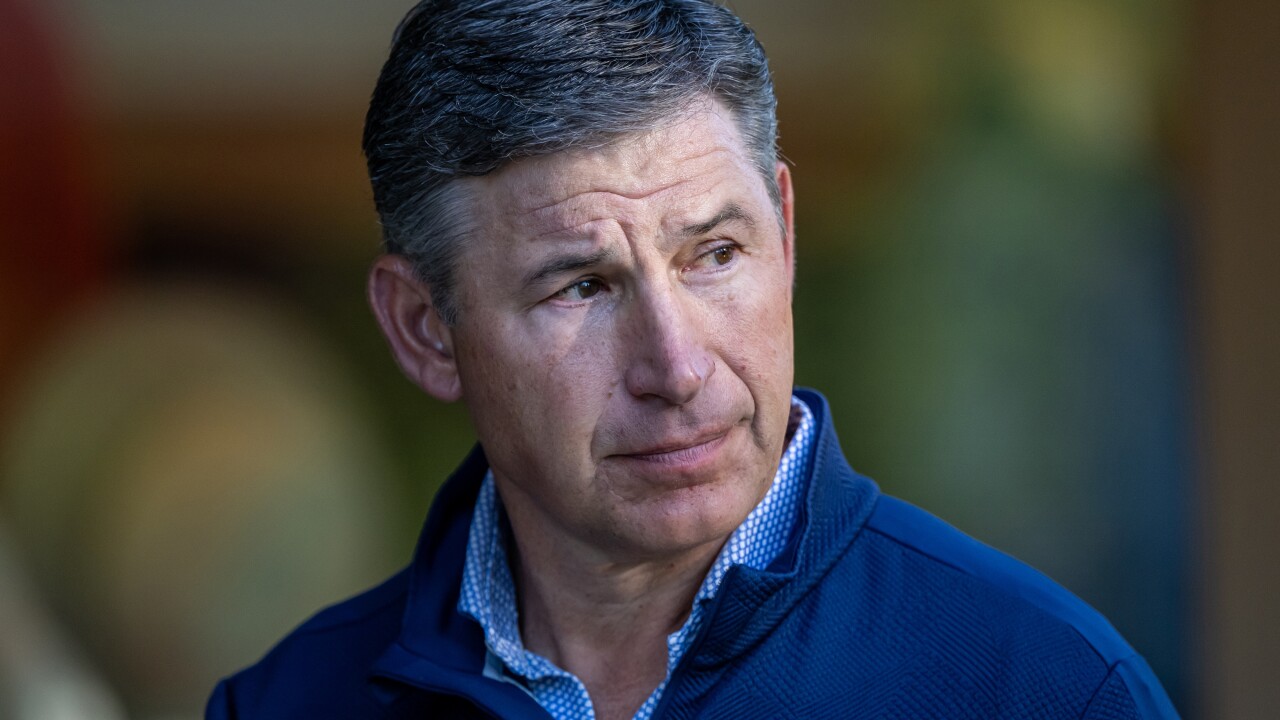Many banks lack
The Pine Bluff, Arkansas-based banking company on Thursday launched a multi-university initiative that creates programs for financial education and leadership training, as well as mentoring programs and internships tailored for women athletes.
Women account for 65% of Simmons' 2,740 employees, but are a minority of its executives and account for just three of 16 seats on the company’s board. By targeting athletic programs for prospective hires, Simmons can focus on students who have the talents it looks for when hiring people who can grow into executive roles.
“They are developing many of the skills that make great leaders. That’s one of the big reasons we are so interested in this,” George Makris Jr., chairman and CEO of Simmons, said in an interview. “These are women performing at the highest level available to them.”
In balancing academics with athletics, they develop time management, teamwork and leadership skills — and they learn from the winning and losing, the personal triumphs and inevitable setbacks such as injuries, Makris said.
The challenge, he said, is to make the banking sector appealing to these athletes. Makris emphasized that a career in banking can also cover technology, risk management, marketing or investing. It’s a matter of presenting the myriad possibilities to potential recruits.
To that end, the

While in its infancy, the initiative will focus in large part on banking education while also creating opportunities for internships and other programs that invite top student-athletes into banks, Simmons said.
The schools span most of the bank’s footprint. Simmons operates more than 200 branches in Arkansas, Missouri, Tennessee, Texas, Oklahoma and Kansas.
The initiative resembles the efforts BMO Financial Group has made to
At Simmons, the initiative began with a discussion at one school but quickly grew into a multi-university endeavor, according to Elizabeth Machen, executive vice president of marketing and communications at the company’s Simmons Bank.
“The more we talked about it, the more we knew we wanted to expand this across our footprint,” she said in an interview.
Workplace diversity is increasingly a differentiating factor for would-be employees, particularly younger generations, Machen said. A
Banks have made strides with bringing women into their ranks but have a long way to go when it comes to representation in the top leadership levels.
Of the 90 banks ranked on
A 2021 McKinsey & Co. study found a nearly even split between men and women at the entry level of banking. But that ratio shifts in favor of men “with each rung up the ladder,”
Makris said the pandemic added a new layer of difficulty in not only recruiting women, but retaining them.
Indeed, throughout 2020 — amid the height of coronavirus fallout — nearly 3 million women left the U.S. workforce, accounting for 55% of overall job losses, according to U.S. Labor Department data.
“We are all in unprecedented times with our workforce,” he said. An aging baby boomer generation whose members are
The good news, Makris said, is that early feedback from college coaches and athletic directors is encouraging. They say college athletes are not only prepared for leadership but many of them graduate eager to join industries in which women are encouraged to pursue top jobs.
“I think that is absolutely true,” Candice Storey Lee, athletic director at Vanderbilt University in Nashville, Tennessee, said in an interview. “Commitment, teamwork, how to lead, when to follow, how to build relationships, how to manage time, how to handle adversity, how to succeed — these are all things student athletes go on to call upon in their careers. They just want the best opportunities.”
Lee, a former standout basketball player at Vanderbilt in the 1990s before earning a doctorate degree from the university, said creative and targeted recruiting strategies such as the one Simmons kicked off this week are important to improving representation at the top ranks.
“It’s needed,” she said, “and I absolutely applaud deliberate efforts to attract and build pipelines of women leaders.”





